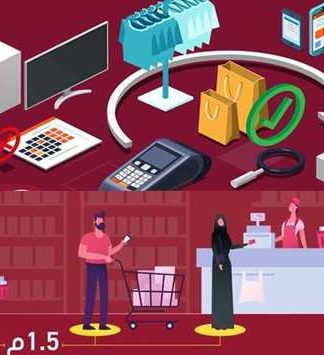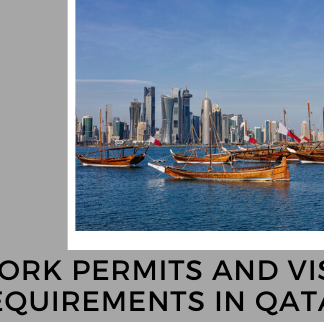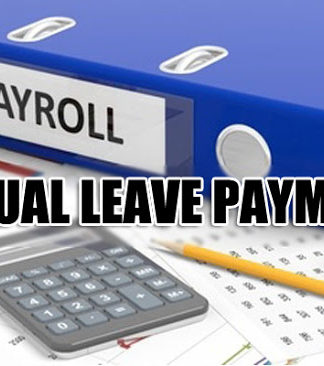WORKFORCE AND EMPLOYMENT
4 ways businesses can support the rights and wellbeing of employees with disabilities
Dec 2, 2022
Simple tools such as a braille keyboard can create new ways for people with disabilities to participate in the workplace.
Image: Unsplash/Elizabeth Woolner
Fernando Alonso Perez-Chao
Action Lead, Diversity, Equity, Inclusion and Social Justice, World Economic Forum
Share:
OUR IMPACT
What’s the World Economic Forum doing to accelerate action on Workforce and Employment?
THE BIG PICTURE
Explore and monitor how Workforce and Employment is affecting economies, industries and global issues
CROWDSOURCE INNOVATION
Get involved with our crowdsourced digital platform to deliver impact at scale
Stay up to date:
Workforce and Employment
This article is part of:
Centre for the New Economy and Society
Listen to the article
10 min listen
More than 1.3 billion people currently experience disability but only 4% of businesses are focused on making offerings inclusive of disabled people.
The International Day of Persons with Disabilities aims to promote an understanding of disability issues, including in the workplace.
We asked four business leaders about how companies can support people with disabilities through accessibility measures and inclusion strategies.
The World Health Organization estimates that more than 1.3 billion people – about 15% to 20% of the global population – currently experience disability. Together with friends and family, this group has a spending power of $13 trillion.
According to the Return on Disability Report, only 4% of businesses are focused on making offerings inclusive of disabled people. The International Labour Organisation estimates that the cost of disability exclusion can be up to 7% of OECD countries’ gross domestic product (GDP).
People with disabilities are diverse and heterogeneous. Disabilities can be visible or invisible; temporary or permanent. The number of persons who live with a disability is increasing due to demographic trends and increases in chronic health conditions, among other causes. Almost everyone will temporarily or permanently experience disability at some point in their life.
Have you read?
Bold women can tackle the workplace challenge of disability
Closing the disability inclusion gap with business leadership
Technology can level the playing field for people with disabilities in the workforce
The International Day of Persons with Disabilities on December 3 aims to promote an understanding of disability issues and mobilize support for the dignity, fundamental rights and wellbeing of persons with disabilities.
To protect and support people with disabilities, businesses have introduced several accessibility measures and inclusion strategies.
Making the workplace more inclusive for people with disabilities
We have asked business leaders to provide an outlook on the latest activities at the disability inclusion frontier. Here’s what they said.
1. Develop disabled talent beyond hiring
While hiring disabled talent is increasingly becoming a common practice, the disabled community remains underrepresented in leadership positions, both in the private and public sector.
Following a call to action in the World Economic Forum Annual Meeting in Davos 2022, the Valuable 500 – the largest network of global CEOs committed to disability inclusion – has launched Generation Valuable, a leadership development programme to accelerate opportunities and elevate the voices of tomorrow’s C-Suite talent.
The first-of-its-kind programme will be a springboard for the disability leaders and champions of today so that they may drive disability inclusion and accessibility efforts in their companies, influence cultural and system change, and sit in the boardrooms of tomorrow.
The initial cohort of 75 Generation Valuable participants will lead conversations within their own C-Suite and take part in a series of modules including creative leadership, leadership identity, strategic thinking, business for good/environment, social and governance (ESG), and disability advocacy – driving change within their own organizations, as well as connecting with a global peer network.
“
“The workplace offers great opportunities to truly move the needle on societal D&I issues, and as businesses we have a huge responsibility to make this happen”
”
— Margot Slattery, Group Head of Diversity and Inclusion, ISS
2. Close the disabilities data gap and foment more inclusive reporting
Disability inclusion is strikingly absent from standardized key performance indicators, metrics or targets through which organizations measure their impact, performance, and the value they bring to society.
Inclusive disclosure on disability inclusion by companies will enable investors and other stakeholders to make more informed investment and engagement decisions with respect to that organization.
While companies are increasing their efforts in prioritizing the social in ESG, there is still a need for companies to acknowledge disability inclusion as a material topic and engage in more transparent and harmonized reporting.
Allianz, for example, is collaborating with London Stock Exchange Group (LSEG) and Valuable 500 to develop a reporting framework which will increase transparency on disability data disclosure.
LSEG and Allianz are convinced that data transparency is a prerequisite to increase awareness and drive change toward people with disabilities. Therefore, they are analyzing different reporting dimensions, such as a common definition of disability, a standardized data collection process or the materiality of disability inclusion for investors and other stakeholders.
“
I hope that the future of disability inclusion highlights one critical point: that we don’t talk about what we cannot do, but we talk about what we can do.
”
— Oliver Bäte, CEO Allianz
3. Recognize and embrace neurodiversity
Neurodiversity acknowledges the idea that people experience and interact with the world around them in different ways.
While it refers to the diversity of all people, it is commonly used in the context of autism spectrum disorder and other neurological or developmental conditions such as attention deficit hyperactivity disorder or learning disabilities, according to Harvard Medical School.
Research shows that diverse perspectives drive better business outcomes, and that when people feel a sense of belonging at work, they are more creative, healthier, and more engaged.
However, diverse perspectives alone are not enough —rather, it is the application and integration of diversity that truly unlock value. This is especially true with neurodivergent individuals who help organizations meet the demand for innovation.
According to EY’s latest research, teams with neurodivergent individuals have higher rates of innovation than teams made up only of neurotypical employees. As a result, organizations that tap into the creativity that diversity brings are better positioned to excel in areas key to future success and with strong organizational muscle for transformation.
Neurodiversity is a crucial part of rethinking the “who and how” of agility as business leaders rise to meet a rapidly changing market and society.
“
“We know that advancing disability inclusion creates value for EY people and clients. The future needs all of us, and the world works better, when it works for everyone”
”
— Carmine Di Sibio, Global Chairman and CEO of EY
4. Explore the intersection between inclusive design and innovation
Inclusive design applies an understanding of customer diversity to inform decisions throughout the development process to better satisfy the needs of more people. Products that are more inclusive not only create new ways for people with disabilities to participate in socioeconomic life; they also can reach a wider market, improve customer satisfaction and drive business success.
From screenless braille computers to autonomous vehicles and smart assistant tools, inclusive design considers human diversity and creates new ways for people with disabilities to participate in socioeconomic life.
The new accessibility features of Window’s latest update are one of the ways Microsoft is helping to bridge the disability divide. These include System-Wide Live Captions to automatically generate captions from any form of audio content on Windows 11, voice access that allows users to control their PCs and author text using only their voice, and Natural Voices for Narrator, which mirrors natural speech more closely.
“
“Technology has the power to empower. Our responsibility is to raise the bar for what is possible with technology for people with disabilities and deliver on the potential of inclusive design”
”
— Jenny Lay-Flurrie, Chief Accessibility Officer, Microsoft
Google has recently developed Guided Frame, a new feature that makes the process of taking selfies more accessible for people who are blind or low vision. Developed in direct collaboration with the blind and low-vision community, the feature uses precise audio guidance (moving right, left, up, or down) and haptic feedback (vibrations) to guide you into the “sweet spot” before automatically capturing the image.
Moving forward with supporting people with disabilities
The Valuable 500 is now focused on harnessing the power of the collective in order to effect simultaneous synchronised action against barriers such as the systemic lack of leadership, reporting and representation.
Caroline Casey, Founder of the Valuable 500, urged companies to: “Find out what you are already doing across all regions and all companies as you’ll be surprised how much is going on. This will reveal the ‘valuable truth’ – full discovery on what is going on within the business.
“A first step is to set up an ERG [employee resource group], and if there’s one already set up, ensure it has executive sponsorship and has a budget behind it so that you can get the intelligence of the people within the organization.”
License and Republishing
World Economic Forum articles may be republished in accordance with the Creative Commons Attribution-NonCommercial-NoDerivatives 4.0 International Public License, and in accordance with our Terms of Use.
The views expressed in this article are those of the author alone and not the World Economic Forum.






























